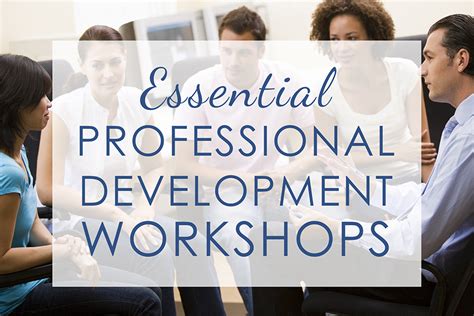Interactive Presentations: Engaging your Audience
Interactive presentations are a powerful tool for engaging an audience and creating a memorable experience. Gone are the days of dull, one-way communication where the speaker talks and the audience listens passively. With interactive presentations, both the presenter and the audience actively participate in the communication process, leading to better understanding, increased retention of information, and a greater impact overall.
One effective strategy for creating interactive presentations is to use technology such as polling and live feedback tools. These tools allow the presenter to incorporate real-time audience participation, such as asking questions, conducting polls, or soliciting feedback. By involving the audience directly, the presenter can gauge their understanding, opinions, and preferences on the topic at hand. This not only makes the presentation more engaging, but it also provides valuable insights that can be used to tailor the content to the specific needs and interests of the audience.
Another way to make presentations more interactive is by incorporating multimedia elements. Instead of relying solely on text-heavy slides, consider using videos, images, and audio clips to enhance the visual and auditory experience for the audience. These multimedia elements can help to break the monotony of text and keep the audience engaged throughout the presentation. Additionally, interactive elements such as clickable buttons or hyperlinks can be used to provide additional information or resources for further exploration.
- By using interactive presentations, presenters can:
- 1. Capture and maintain audience attention.
- 2. Encourage active participation and engagement.
- 3. Enhance understanding and retention of information.
- 4. Gather valuable insights and feedback.
| Benefits of Interactive Presentations |
|---|
| Increased audience engagement |
| Improved information retention |
| Real-time audience feedback |
| Customized content delivery |
| Enhanced learning experience |
In conclusion, interactive presentations offer an effective way to engage an audience and create a more memorable and impactful communication experience. By incorporating technology, multimedia elements, and audience participation, presenters can capture and maintain audience attention, enhance understanding and retention of information, and gather valuable insights and feedback. So, the next time you are preparing a presentation, consider making it interactive and see the difference it can make!
Effective Communication Strategies for Team Building
Effective communication is an essential skill for successful team building. When team members are able to effectively communicate with one another, ideas flow more freely, conflicts are resolved more efficiently, and overall productivity is increased. In this blog post, we will explore some effective communication strategies that can be employed for team building.
One important communication strategy for team building is active listening. Active listening involves fully concentrating on, understanding, and responding to the speaker. It is crucial for team members to actively listen to one another in order to foster open and honest communication. By actively listening, team members can better understand each other’s perspectives, opinions, and ideas, which can lead to more effective problem-solving and decision-making.
Another key communication strategy for team building is clarity in communication. It is important for team members to clearly express their thoughts, ideas, and expectations to one another. Clear communication helps to prevent misunderstandings and misinterpretations and ensures that everyone is on the same page. This can be achieved by using concise language, avoiding jargon, and asking for clarification when needed.
- Active Listening: Actively listen to one another to understand different perspectives and foster open communication.
- Clarity in Communication: Clearly express thoughts, ideas, and expectations to prevent misunderstandings and promote alignment.
- Non-Verbal Communication: Pay attention to non-verbal cues such as body language and facial expressions to better understand each other’s feelings and emotions.
| Communication Strategy | Description |
|---|---|
| Active Listening | Actively listen to one another to understand different perspectives and foster open communication. |
| Clarity in Communication | Clearly express thoughts, ideas, and expectations to prevent misunderstandings and promote alignment. |
| Non-Verbal Communication | Pay attention to non-verbal cues such as body language and facial expressions to better understand each other’s feelings and emotions. |
In conclusion, effective communication strategies play a vital role in team building. Active listening, clarity in communication, and paying attention to non-verbal cues are just a few key strategies that can greatly enhance team communication and collaboration. By implementing these strategies, teams can create a positive and productive work environment, leading to successful outcomes and increased team cohesion.
Developing Leadership Skills through Role-Playing
Role-playing is an effective method for developing leadership skills in individuals. It allows aspiring leaders to step into various roles and scenarios, gaining valuable experience and honing their abilities. Through role-playing, individuals can develop important skills such as communication, decision-making, problem-solving, and emotional intelligence. By actively engaging in simulated situations, leaders learn to think on their feet, adapt to different circumstances, and guide their team towards success. In this blog post, we will explore the benefits of role-playing in leadership development and delve into some effective strategies for incorporating it into leadership training programs.
Listed below are some of the key reasons why role-playing is a powerful tool for developing leadership skills:
Creative Problem-Solving Techniques for Innovation
When it comes to innovation, one of the key skills needed is the ability to think creatively and problem solve. Creative problem-solving techniques are essential for finding unique and innovative solutions to complex challenges. In this blog post, we will explore some effective techniques that can help stimulate your creativity and enhance your problem-solving abilities.
1. Brainstorming: Brainstorming is a popular technique used to generate a large number of ideas in a short amount of time. In a brainstorming session, individuals or teams come together to share ideas, suggestions, and potential solutions to a given problem. The key to successful brainstorming is to encourage free thinking and avoid criticizing or judging ideas. This technique allows for the exploration of unconventional ideas and can often lead to unexpected and innovative solutions.
2. Mind Mapping: Mind mapping is a visual technique that helps organize and connect various thoughts and ideas related to a specific problem or challenge. It involves creating a diagram with a central idea or problem at the center and branching out with related thoughts, concepts, and possible solutions. Mind mapping allows you to visually see the connections between different elements and can help trigger new ideas and perspectives.
3. SCAMPER: SCAMPER is an acronym for Substitute, Combine, Adapt, Modify, Put to another use, Eliminate, and Reverse. This technique encourages individuals to think of different ways to modify or adapt existing ideas or concepts to create new and innovative solutions. By systematically considering each element of SCAMPER, you can stimulate your creativity and think outside the box.
Using these creative problem-solving techniques can help foster innovation and lead to groundbreaking solutions. Whether you are trying to develop a new product, improve a process, or find a solution to a complex issue, incorporating these techniques into your problem-solving approach can unlock new possibilities and pave the way for success.
Time Management Tips for Increased Productivity
Time management is a critical skill that can greatly impact an individual’s productivity. With the demands of daily life constantly increasing, it is essential to find effective strategies to manage time efficiently.
One important time management tip is to prioritize tasks. Assessing the urgency and importance of each task helps in determining the order in which they should be completed. Prioritizing allows individuals to focus on high-priority tasks first and ensures that important deadlines are met.
Another useful strategy is setting SMART goals. Specific, Measurable, Achievable, Relevant, and Time-bound goals provide a clear direction and help individuals stay on track. Breaking down larger goals into smaller, manageable tasks helps in better time allocation and allows for regular progress checks.
Furthermore, it is vital to minimize distractions and maintain focus. Distractions such as social media, email notifications, and unnecessary online browsing can significantly hinder productivity. Creating a quiet and dedicated workspace, turning off notifications, and practicing mindfulness techniques can help in maintaining focus and accomplishing tasks within deadlines.
Additionally, utilizing time-saving tools and techniques can greatly enhance productivity. Using digital calendars, task management apps, and project management software can help individuals stay organized and efficiently allocate time for different tasks. Automating repetitive tasks and delegating responsibilities when possible can also free up time for more important and challenging tasks.
In conclusion, effective time management is crucial for increased productivity. Prioritizing tasks, setting SMART goals, minimizing distractions, and utilizing time-saving tools and techniques can all contribute to better time management. By implementing these strategies, individuals can improve their productivity and achieve their goals more efficiently.
Keywords: time management, productivity, prioritize tasks, SMART goals, minimize distractions, time-saving tools
| Time Management Tips | Benefits |
|---|---|
| Prioritize tasks | Ensure important deadlines are met |
| Set SMART goals | Create clear direction and track progress |
| Minimize distractions | Maintain focus and stay on track |
| Utilize time-saving tools | Stay organized and allocate time efficiently |
Building a Strong Professional Network for Career Growth
A strong professional network is essential for career growth. Networking allows individuals to connect with others in their industry, exchange information and resources, and open up new opportunities. Whether you are a recent graduate entering the job market or an experienced professional looking to advance in your field, building and nurturing a network can greatly enhance your career prospects.
One effective way to build a strong professional network is by attending industry events and conferences. These events provide a platform for professionals to meet and connect with like-minded individuals. Make sure to come prepared with your business cards and be proactive in starting conversations. Take advantage of networking sessions and social events to engage with others and establish meaningful connections.
Another important aspect of building a strong professional network is maintaining regular communication with your contacts. After meeting someone at an event or conference, follow up with a personalized email or LinkedIn connection request. Keep in touch by sharing relevant industry news, congratulating them on their achievements, or inviting them to professional development events or webinars. Regularly reaching out to your contacts will help foster strong relationships and keep you top of mind.
In addition to attending events and staying in touch, it is also crucial to actively engage in professional networking through online platforms. LinkedIn, in particular, is a valuable tool for connecting with professionals in your field. Create a compelling profile that highlights your skills and experience, join industry-related groups, and contribute to discussions. This will not only help you expand your network but also position yourself as a knowledgeable and active member of your industry.
- Attend industry events and conferences
- Maintain regular communication with your contacts
- Engage in professional networking on online platforms
| Benefits of Building a Strong Professional Network |
|---|
| 1. Greater Career Opportunities: Having a strong network opens up access to job openings, referrals, and recommendations. |
| 2. Knowledge and Information Sharing: A diverse network allows for the exchange of industry insights, best practices, and emerging trends. |
| 3. Mentorship and Guidance: Experienced professionals within your network can provide valuable guidance and mentorship as you navigate your career. |
| 4. Collaboration and Partnerships: A network provides opportunities for collaboration, partnerships, and joint ventures with other professionals in your field. |
| 5. Professional Development and Growth: Interacting with professionals in your industry allows for continuous learning and staying abreast of new developments. |
Emotional Intelligence: Enhancing Interpersonal Relationships
Emotional intelligence plays a crucial role in enhancing interpersonal relationships. It refers to the ability to recognize, understand, and manage our own emotions, as well as those of others. Cultivating emotional intelligence not only helps us navigate and manage our own feelings, but also allows us to empathize and connect with others on a deeper level.
One key aspect of emotional intelligence is self-awareness. By being aware of our own emotions and how they impact our thoughts and behaviors, we can better understand ourselves and our interactions with others. Self-awareness helps us to recognize our strengths and weaknesses and allows us to respond to situations in a more considered and constructive way.
Another important component of emotional intelligence is empathy. Empathy is the ability to understand and share the emotions of others. By putting ourselves in someone else’s shoes and imagining how they might be feeling, we can respond with compassion and understanding. This not only strengthens our relationships, but also fosters mutual trust and respect.
In addition to self-awareness and empathy, emotional intelligence also involves effective communication. Communication is a two-way process, and emotional intelligence helps us to both express ourselves effectively and listen actively to others. By expressing our thoughts and emotions clearly and respectfully, we can avoid misunderstandings and conflicts. Moreover, by actively listening to others and giving them our full attention, we show that we value their perspectives and experiences.
Using emotional intelligence in our interpersonal relationships can greatly enhance our ability to connect with others on a deeper level. It allows us to build stronger bonds, resolve conflicts in a more positive manner, and create a supportive and harmonious environment. By developing our emotional intelligence, we can not only enhance our own well-being, but also contribute to the well-being and happiness of those around us.
- Self-awareness
- Empathy
- Effective communication
| Self-awareness | Empathy | Effective Communication |
|---|---|---|
| Recognizing our own emotions and their impact | Understanding and sharing the emotions of others | Expressing thoughts and emotions clearly and respectfully |
| Understanding our strengths and weaknesses | Putting ourselves in someone else’s shoes | Listening actively and giving full attention |
| Responding to situations in a considered way | Responding with compassion and understanding | Avoiding misunderstandings and conflicts |
Frequently Asked Questions
1. How can I make my presentations more interactive and engaging for my audience?
There are several ways to make your presentations more interactive and engaging. You can incorporate activities, polls, and quizzes to encourage audience participation. Additionally, using visuals, storytelling, and incorporating multimedia elements can help capture your audience’s attention and make your presentation more memorable.
2. What are some effective communication strategies for team building?
Effective communication is crucial for building strong teams. To improve team communication, it is important to encourage open and transparent communication among team members, actively listen to understand their perspectives, and provide regular feedback and constructive criticism. Additionally, promoting collaboration, setting clear goals, and fostering a positive and supportive environment can enhance team communication and cohesion.
3. How can role-playing help in developing leadership skills?
Role-playing can be a valuable tool for developing leadership skills as it allows individuals to practice different leadership scenarios in a safe and controlled environment. By taking on different roles, individuals can enhance their decision-making, problem-solving, and communication skills. Role-playing also provides an opportunity to receive feedback and learn from mistakes, which can contribute to the development of effective leadership skills.
4. What are some creative problem-solving techniques for innovation?
To foster innovation and creative problem-solving, it is important to encourage non-traditional approaches. Some techniques include brainstorming, mind mapping, thinking outside the box, and using metaphors or analogies. Collaborative problem-solving techniques such as design thinking and the “five whys” method can also help uncover innovative solutions by analyzing the root cause of a problem.
5. What are some effective time management tips for increased productivity?
To improve time management and productivity, it is important to prioritize tasks, set realistic goals, and create a schedule or to-do list. Avoiding multitasking and focusing on one task at a time can help increase productivity. Additionally, delegating tasks, minimizing distractions, and taking regular breaks can help maintain focus and energy levels.
6. How can I build a strong professional network for career growth?
Building a strong professional network involves actively networking and connecting with professionals in your field. Attending industry events, joining professional associations, and utilizing online platforms such as LinkedIn can help expand your network. It is important to maintain and nurture relationships by staying in touch, offering support, and providing value to your network. Building a diverse network can also lead to new opportunities and career growth.
7. How can emotional intelligence enhance interpersonal relationships?
Emotional intelligence refers to the ability to understand and manage emotions effectively. Developing emotional intelligence can enhance interpersonal relationships by improving communication, empathy, and conflict resolution skills. Being aware of one’s emotions and the emotions of others can help build trust, foster cooperation, and create a positive and harmonious environment in both personal and professional relationships.





